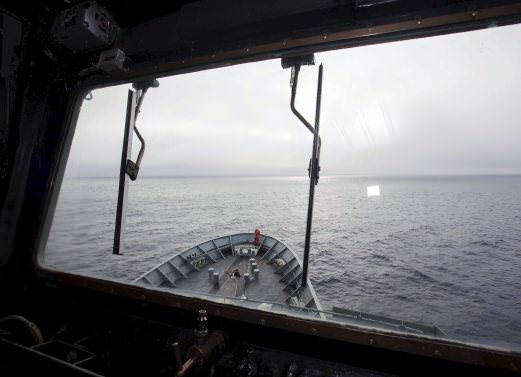SYDNEY: Despite months of disappointment, toughing out seas lashed by cyclonic winds and thousands of hours of searching for debris thought to be on a seabed almost three miles deep, Paul Kennedy is determined.
“We are really confident we are going to find it,” said Kennedy, search director for Fugro Survey, a division of a Dutch company hired by the Australian government to look for wreckage from Malaysia Airlines Flight 370, which disappeared almost a year ago.
“I am almost anticipating that phone call, from the guys on the boat, every day, literally,” Kennedy said in an interview from Perth, the Australian city where he is based. “I expect it anytime. I thoroughly believe we will run over it, and the guys will say, ‘Guess what we’ve found,’ and then we will move on to the next phase.”
For those who have followed the enduring mystery of Flight 370, Kennedy’s faith that the plane will be found may be difficult to understand.
The Boeing 777 was headed from Kuala Lumpur, Malaysia, to Beijing with 239 people aboard on March 8 when it veered inexplicably off course and headed south. Despite numerous false sightings, no debris from the plane has been found. In January, the Malaysian government declared the loss of the flight an accident and said the passengers and crew were presumed dead.
Fugro Survey has three ships searching off the coast of Western Australia for wreckage from the plane. So far, the vessels have relayed images of volcanoes, rift valleys, ridgelines, rocks, outcropping geological structures, sand, sediment and what could be sunken shipping containers, Kennedy said.
Artificial shapes, when discovered, stand out plainly amid the organic matter, he said.
“They reflect sound energy back very strongly.”
The Australian Transport Safety Bureau said Thursday in a briefing that the ships had relayed images of scattered objects on the seabed. “These objects may be man-made, but expert analysis of the imagery advises that none of them resemble an aircraft debris field,” the bureau said in a statement, adding that some of them appeared to have the dimensions of shipping containers.
Kennedy said he was confident that the vessels would not miss debris from the plane. In August, he said, Fugro built targets about a yard in diameter and sank them about 2,300 feet in waters off an Australian island.
“We always find those targets,” he said. “It makes me feel very confident, because our equipment in this search is much closer to the seafloor.”
The arc of the search is a long, thin line that includes all of the most likely points of communication between the plane, as it flew south, and a satellite. The search began in the South China Sea but later moved to the southern Indian Ocean, where low clouds and poor weather have hindered visual scanning of the sea’s surface for debris.
Occasional equipment failures have required some ships to make long trips back to port.
Since Fugro’s part in the search began, three cyclones have occurred in the search zone, producing “some of the roughest weather we have ever seen,” Kennedy said. During one storm, 55-foot waves were recorded, compared with 15 feet on a normal day, Kennedy said.
“The boat got stuck in it,” he said. “There was nowhere to run. It was too dangerous to turn the ship around, so they had to stick it out.”
The scientists and sailors on the vessels work 12-hour days, spending stretches of 42 days at sea, he said.
One of the three ships, the Fugro Equator, mapped nearly 40,000 square miles of seabed before being joined by a second ship, the Fugro Discovery. Both vessels have deep-sea towed submersibles that scan the seafloor for debris. Data is transmitted to the surface in real time, and later to analysts working in Perth, in the Australian capital of Canberra and in Connecticut, he said.
“We have multiple sets of eyes looking at it,” Kennedy said. “When we run over it, the guys offshore are the ones who are going to see it first.”
A third vessel, the Fugro Supporter, which carries an autonomous submersible, has searched around underwater volcanoes and in other places the towed equipment cannot reach. The Go Phoenix, a ship dispatched by Malaysia, is also working with the Fugro vessels.
Kennedy said he was confident that the search area was indeed where the plane came to rest, citing the multiple experts who drew that conclusion independently of one another. Once the debris is found, it will be photographed, Kennedy said.
“In an ideal world, they will try and get the tail section with a big Malaysia Airlines logo, and there will be no doubt in anyone’s mind then,” he said. — New York Times News Service
-NST







